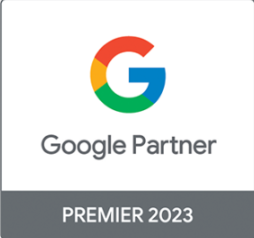We can use ROI and Attribution to measure and optimize the performance of Paid Media campaigns. After clicking, users engage in various activities online and this activity is multi-layered. In order to better understand this activity so that we can also optimize these campaigns, we rely on insights such as ROI and Attribution.
These insights ensure that our paid media strategies are focused on generating optimal value for our clients. When using this data in an efficient and correct way, it may offer well-informed Performance Marketing insights that help move the needle for our clients.
What are ROI and Attribution?
ROI stands for Return On Investment. This is a performance metric that can be used to measure how efficient an investment is. The result of an investment is based on a positive or negative return. A positive return would yield an amount greater than the investment while a negative return would be less than the initial investment.
This is an essential insight tool because it allows us to establish an overview of the business’s overall impact on the market. It also enables us to gauge which elements of the business are delivering on returns and which elements are not.
This then informs us on where to invest next and also which elements of the business require improvement.
Attribution can be defined as the practice of assigning credit to the events that occur along the path to conversion. There are different types of attribution models. However, the most commonly used are single-touch and multi-touch attribution.
Single-touch attribution assigns 100% of the credit to a single touch point while multi-touch attribution assigns a certain percentage of the credit to specific touch points along the customer journey. Attribution allows us to determine which event is more influential in driving conversions. Furthermore, it also allows us to assess which conversions are most likely to generate a greater ROI for the business.
We can establish a degree of importance by weighting the values of each event differently across the customer journey.
Measuring ROI and Attributions in Paid Advertising
There are some metrics to consider when measuring ROI in Paid Advertising. The metrics that best supplement the measurement of ROI include:
Conversion Rate:
Conversion Rate is the rate at which a click turns into a lead or a lead turns into a purchasing customer.
Depending on the business goals and the campaign focus, conversions can be set up to best ensure that the business objectives are met. Conversion rates can also be used to create ROI projections for new campaigns and to allocate budgets more efficiently.
We can assess conversion rates from a panoramic perspective by evaluating it across different channels, devices, platforms and in much granular detail to ensure that our time and money is invested into aspects of the campaign that is most likely to generate a return.
Return On Ad Spend (ROAS):
ROAS is not that different from ROI. However, ROAS allows us to observe and evaluate different aspects of a campaign’s performance in detail. Whereas, ROI is a result of the overall campaign performance.
It’s important to remember that Return On Ad Spend doesn’t include the hidden expenses associated with the setting up and running of campaigns but it does provide us with a much more granular view for optimization and improvement.
Average Order Value (AOV):
This is the median amount spent on a purchase made by a customer. This metric is essential because it allows you to understand the value of your conversions.
Though generating a lot of conversions may be seen as a good performance indicator, the value of the purchases made through those conversions may not be so high. Reduced spending by customers could make it even harder to reach your ROI.
Cost Per Acquisition (CPA):
This is the cost required to convert a lead into a prospective customer. A higher CPA would ideally mean that you’re spending more for fewer conversions.
Click Through Rate (CTR):
This metric measures the engagement of users with different aspects of your campaign. It may inform you which aspects of your campaign are most likely to yield a greater ROI – which aspect of your campaign has the most potential to convert clicks or leads, therefore allowing you to implement a more strategic method of driving traffic.
Cost Per Click (CPC) & Cost Per Mille (CPM):
Cost Per Click (CPC) is the measurement model used to bill advertisers based on the number of clicks an ad receives on the platform it’s being served. Cost Per Mille/Thousand (CPM) is the cost per thousand impressions that an advertiser will receive on a platform. These metrics are essential when determining the efficiency of a campaign and also when implementing a new campaign strategy.
It is vital that these metrics are accurate so that the conclusions established from them don’t generate skewed results. It is therefore important to have proper tracking in place so that the data being collected is not only viable but well-informed so that it may be strategically implemented.
How can we use ROI and Attributions in Paid Advertising?
Attribution allows us to evaluate performance on a granular level as opposed to ROI which is more holistic. ROI is the resource or tool used in establishing a marketing strategy and formulating potential projections while Attribution is a means of tweaking and managing the marketing strategy along the path to meeting those projections.
You can also use a Data-Driven Attribution Model in Google Ads and Google Analytics which allows you to assign an estimated monetary value to conversions or other important events that occur on the advertiser’s website.
Focus on aspects of the campaign that are most likely to generate the most valuable conversions by prioritising the specific conversions you want to track such as enquiries, leads, and sales by setting a different conversion value for each. Essentially, you can then focus your efforts on driving specific conversions by adjusting your budgets accordingly.
Using Google Ads for your Bidding Strategy
In Google Ads you can also implement a Value-Based Bidding Strategy that uses a Machine Learning Model called Smart Bidding.
Google optimizes traffic according to the attributions you set for your conversions within your allocated budget. It will automatically target an audience with the highest likelihood of making that conversion.
Conversion values for e-commerce and lead-generation campaigns may differ. The average order value (AOV) can be used as the conversion value for e-commerce campaigns. However, conversion values for lead-generation campaigns are not as easy to estimate but the estimated lifetime value (LTV) of the lead may be used, as well as the acquisition cost of the customer.
How Efficient are ROI and Attribution?
ROI and Attribution are essentially the most efficient when measuring performance and optimizing towards that performance in Paid Advertising. The data may be used to unpack layers of opportunities that are key to driving results. Understanding their impact can improve not only the media planning and management process but the customer experience as well.



